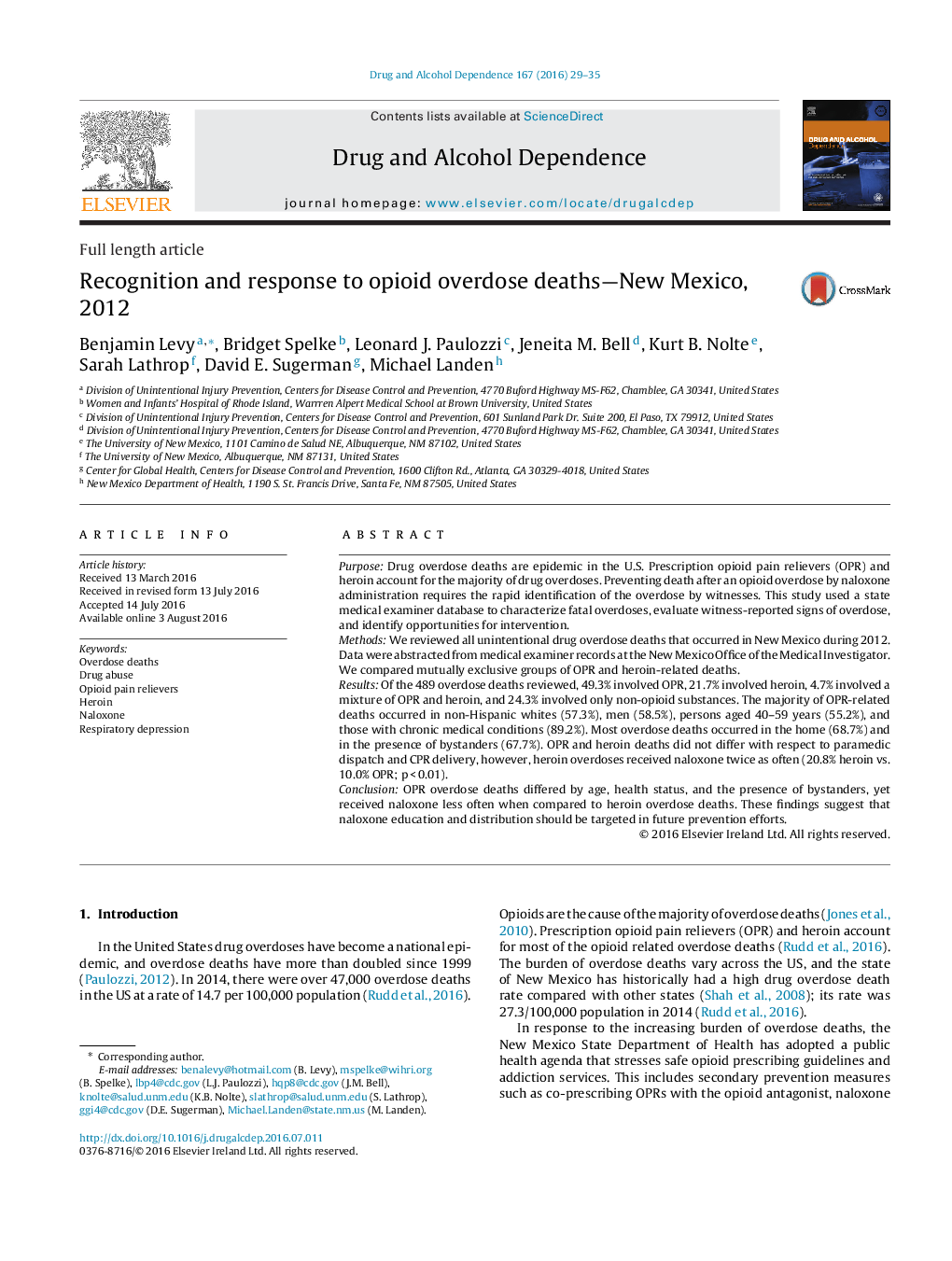| کد مقاله | کد نشریه | سال انتشار | مقاله انگلیسی | نسخه تمام متن |
|---|---|---|---|---|
| 5120491 | 1486124 | 2016 | 7 صفحه PDF | دانلود رایگان |
- Most unintentional overdose deaths were due to prescription opioids or heroin.
- Most overdose deaths occurred in the home, often in the proximity of family.
- Decedents most often had a known history of drug dependency or prior overdose.
- Heroin overdoses received naloxone twice as often as prescription opioid overdoses.
PurposeDrug overdose deaths are epidemic in the U.S. Prescription opioid pain relievers (OPR) and heroin account for the majority of drug overdoses. Preventing death after an opioid overdose by naloxone administration requires the rapid identification of the overdose by witnesses. This study used a state medical examiner database to characterize fatal overdoses, evaluate witness-reported signs of overdose, and identify opportunities for intervention.MethodsWe reviewed all unintentional drug overdose deaths that occurred in New Mexico during 2012. Data were abstracted from medical examiner records at the New Mexico Office of the Medical Investigator. We compared mutually exclusive groups of OPR and heroin-related deaths.ResultsOf the 489 overdose deaths reviewed, 49.3% involved OPR, 21.7% involved heroin, 4.7% involved a mixture of OPR and heroin, and 24.3% involved only non-opioid substances. The majority of OPR-related deaths occurred in non-Hispanic whites (57.3%), men (58.5%), persons aged 40-59 years (55.2%), and those with chronic medical conditions (89.2%). Most overdose deaths occurred in the home (68.7%) and in the presence of bystanders (67.7%). OPR and heroin deaths did not differ with respect to paramedic dispatch and CPR delivery, however, heroin overdoses received naloxone twice as often (20.8% heroin vs. 10.0% OPR; p < 0.01).ConclusionOPR overdose deaths differed by age, health status, and the presence of bystanders, yet received naloxone less often when compared to heroin overdose deaths. These findings suggest that naloxone education and distribution should be targeted in future prevention efforts.
Journal: Drug and Alcohol Dependence - Volume 167, 1 October 2016, Pages 29-35
